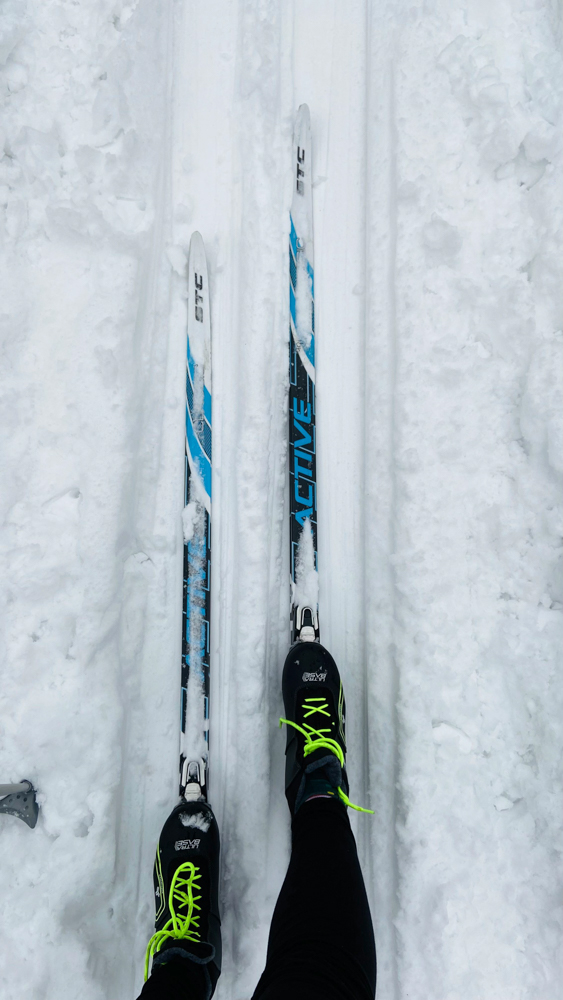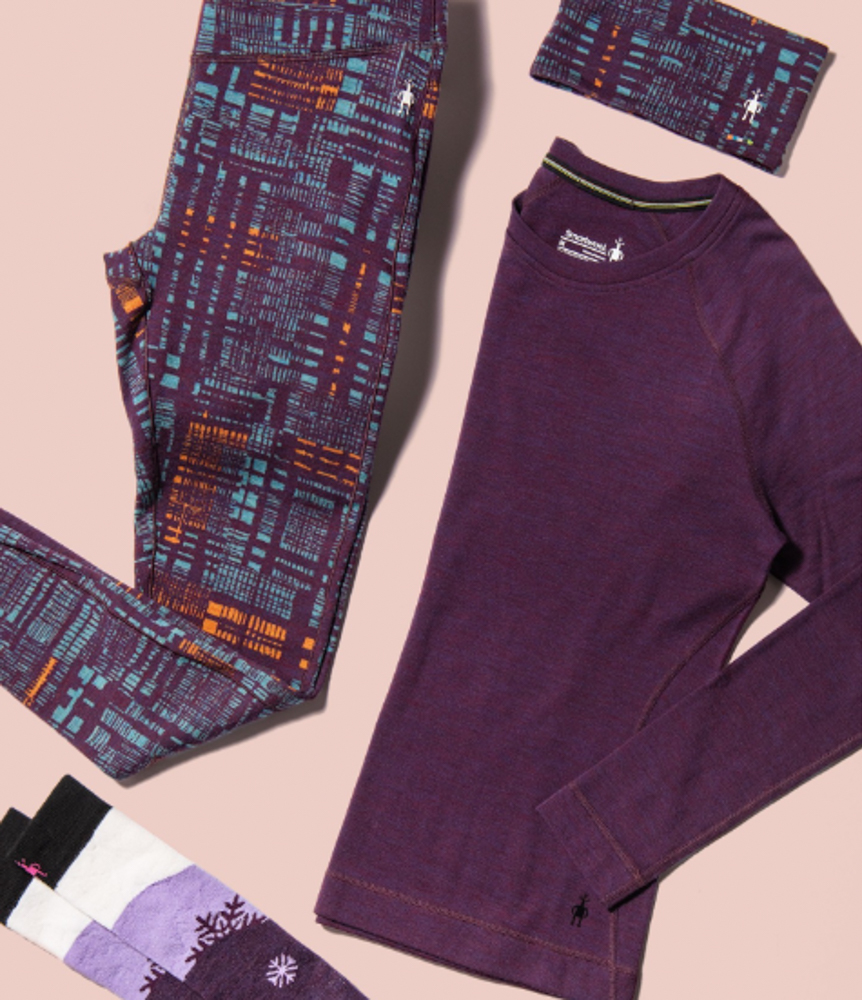So, You Want to Learn to Cross Country Ski?
Cross-country skiing is an accessible activity that doesn’t require a mountainous landscape. Gliding over the snow on your own two feet allows access to beautiful locations that would otherwise be inaccessible by car, all while providing a great (and fun!) workout.
As a lifelong Midwesterner, I get out and ski any time we have enough snow. I truly believe skiing is possible for anyone and want to share tips to get you started. Read on for advice on clothing and gear, safety, and vocabulary that will help you start making tracks.
Cross-Country Ski Words to Know
Knowing a few cross-country skiing-related words can be helpful when talking to other enthusiasts and can boost confidence in your knowledge and abilities.
- XC – Shorthand for cross-country
- Nordic – Cross-country skiing is also called Nordic skiing
- Classic skiing – Classic skiing is kind of a shuffle, gliding straight forward with your skis parallel to one another about hips distance apart on the snow. First-timers and beginners usually ski classic.
- Skate skiing – This more vigorous style involves pointing the front tips of your skis slightly outward and pushing off as if ice skating. It’s much faster, and using poles is optional. This type of skiing is often more difficult as it requires balance and confidence, so people often start classic skiing and move to skate skiing from there.
- Groomed trails – Many areas with snowy conditions will groom trails specifically for xc skiing. Machinery like snowmobiles will pack the snow while dragging lines into the surface to create trails. These tracks make it easier to keep your skis in line.


Gear Up For Success
You don’t need to buy a full xc ski kit to get out on the snow. You probably own a few pieces of outerwear, clothing, and accessories that will help you stay warm and dry. There are a few sport-specific pieces of gear you will need to borrow, rent, or buy.
Equipment
- Skis – Touring cross-country skis are meant for riding groomed trails. They’re perfect for beginners because they are narrow, and may be shorter to allow for easier turns. Touring skis with metal edges are meant for riding on non-groomed trails. The edges protect the skis from obstacles and help them float above deeper, ungroomed snow.
- Ski boots – Cross country ski boots are shorter than downhill ski boots, often stopping right above the ankle. If you tend to have chilly feet, buy ski boots a half size too big and wear thick wool socks. These boots are water-resistant to keep you dry and warm in snowy, windy conditions.
- Eyewear – Snow reflects sunshine even through clouds, so it’s essential to bring sunglasses or UV-protectant goggles when cross-country skiing. Opt for goggles in windy conditions to prevent your eyes from watering and protect them from flying snow or ice.


Clothing
Layering is critical for cross-country skiing. This high-intensity activity will have you working up a sweat in no time, so many skiers dress a little cold. That means they dress as if it was warmer out because they know they’d be uncomfortably hot and sweaty if bundled up. If you sweat through layers, you can easily become cold and be in danger of hypothermia.
- Wicking socks – Look for wool socks with a thickness that will keep you warm without making your ski boots too small.
- Baselayers – Similarly, wool makes an excellent base layer because it can wick sweat away from the body and encourage evaporation, keeping you warm and dry. Try a top and bottom, or only wear one half for the part of you that gets colder faster. Everyone’s bodies are different!
- Insulation – Don a lightweight jacket with down or synthetic insulation that is easy to pull on and off depending on your level of warmth. Down no longer insulates when wet, so consider adding an additional layer if you choose this lightweight, packable material. Synthetic insulation stays puffy and will continue keeping you warm even if dampened.
- A waterproof and windproof layer – Add a waterproof and windproof layer like a soft shell to your skiing kit in case it snows or the wind picks up. Full-zip layers are great for this task as they’re super easy to get on and off as the weather changes. Stash it in your day pack or tie it around your waist if you get hot.
- Warm accessories – One of the fastest and easiest ways to regulate temperature while skiing is to add or remove a hat and mittens. Many cross-country skiers wear headbands with fleece lining to keep their ears warm while letting sweat evaporate from the rest of their heads.

Resources For Beginners
Not quite ready to hit the trails by yourself? Invite friends who already ski to meet up at a trail so you can gain some wisdom! State parks, local trail groups, and outdoor gear stores near snowy trails may offer lessons or meet-ups for beginners to gain community and experience. It can be fun to meet people while trying a new activity. If you want to go it alone, check out online videos for a quick beginner course.

Consider renting skis and boots from an outfitter or borrowing them from a friend so you can be sure you dig the sport before investing in a full gear kit. It’s always safer to travel with a buddy, so see if you can talk a pal into trying XC skiing with you – there’s safety in numbers. You may even find a Facebook group, Meetup, or other online community for people who ski. These groups are great resources for finding ski buddies, asking gear questions, and learning about this new sport!
Safety Tips
Parks, golf courses, and trail systems often feature XC ski paths. Follow trail rules if you’re out on established paths. That means not skiing on trails meant for fat tire bikes or snowshoers. Look for XC ski or multi-use trails so your tracks don’t disrupt the path for other people who recreate outdoors differently. Avoid snowmobile trails, as drivers often go so fast which can be dangerous for a skier. I love skiing on frozen lakes in Northern Minnesota once the ice is many inches thick! Crested Butte, Colorado; Stowe, Vermont; and North Lake Tahoe, California are some popular spots, but you can find trails in many county, state, and national parks.
Many people get out early before work or late after clocking out. That means the sun is low and visibility is less than ideal. Wear clothing with reflective decals and add a light-up vest if you know you’ll be out past dark. Pack a headlamp so you can see your way and be seen.

Pack a day pack with extra layers, snacks, water, a first aid kit, a headlamp, and hand warmers. Make sure your phone is charged, or you have other means of communication like a satellite phone in case of emergency.
The Final Word
I hope this short beginners’ guide is a great place to start your cross-country skiing journey! I love gliding along the pine trees and trails of the Midwest and hope you will soon find a favorite trail near you.
Cover Photo Credit – Irina Zimno
About the Gear Tester

Hatie Parmeter
Hatie Parmeter (she/her) digs hiking, paddling, and yoga. She's a writer and editor in the outdoor industry and is working toward an MS in Clinical Mental Health Counseling. Soon, you'll find her teaching wilderness mental health resources for outdoor outfitters, guides, camps, and more. Bio image is by Lauren Danilek.











